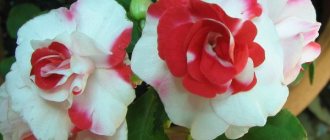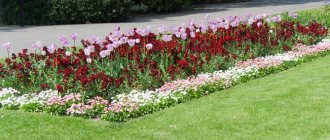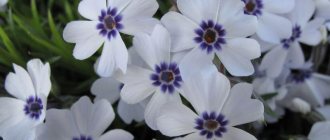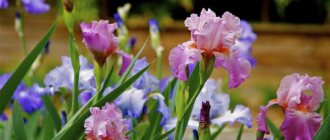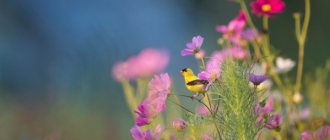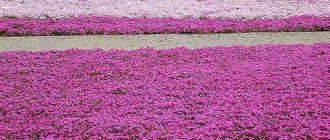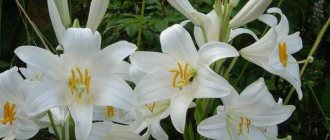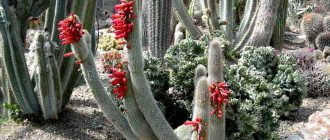Flowers are beautiful creatures of our planet. The rainbow of colors and unique scent of these plants make them a wonderful gift. Floral arrangements can be a decoration for an event or become part of the interior.
Novice florists use popular flowers when making bouquets. There is a lot of information about such plants. After studying it, you can make bouquets at home. The main thing is to purchase the necessary materials for this.
We recommend learning floral art professionally at Ekaterina Andryukova’s online school. Only for visitors to our website there is a special promotional code SL84ECBA88 , which entitles you to a 10% discount on the purchase of any florist school product.
The promotional code is valid once, so we recommend using it on the most expensive purchase. Then your savings will become significant!
Creating bouquets is an entire art that teaches not only how to form compositions, but also how to combine colors. Choose the right plants so that the bouquet does not fade for a long time. Learn the language of flowers, who to give which plants to.
Not only beginners, but also florist masters use common flowers. A catalog of popular cut flowers growing in the domestic natural area and exotic plants is presented below.
Wildflowers: types and names
There are many varieties of wildflowers. Most are actively used in folk medicine, as they have a number of beneficial properties. It has been proven that wildflowers clear the air of dust, and some even destroy pathogenic bacteria. They calm the nervous system and have a beneficial effect on the psyche of people who experience constant stress.
Among the wildflowers:
- dandelions;
- St. John's wort;
- marshmallow;
- valerian;
- yarrow;
- elecampane;
- bloodroot;
- thyme;
- immortelle;
- thyme;
- plantain;
- shepherd's purse;
- nettle.
In fact, most homeopathic medicines are based on wildflowers. Our ancestors used them, and today we also use them, although less actively.
Most of these plants can grow not only in fields, but also near your home. They are unfairly called a weed by some, but they actually have a simple beauty. It was them that our ancestors actively used. By the way, according to popular belief, many wildflowers have magical properties.
garden flowers
They can be either annual or perennial. Their assortment in stores is presented quite widely. Often, experienced gardeners combine these types of garden flowers. We will provide names and brief descriptions below.
Garden flowers are divided into drought-resistant and moisture-loving. Let's take a closer look at them.
Drought-resistant flowers (names given below) retain their beauty even in the absence of regular watering. They are not particularly adversely affected by strong sun and long absence of rain. They are unpretentious and do not require special attention from the gardener.
Drought-resistant flowers include the following:
- Arabis (it is preferable to purchase Alpine and Caucasian);
- verbena;
- phlox;
- alyssum;
- poppy;
- echinacea;
- narcissus;
- succulents;
Moisture-loving plants can be divided into 3 large categories. These include plants that require moist soil, flowers that grow in wetlands, and perennials that grow directly under water.
The moisture-loving ones include:
- forget-me-not (about 50 species are distinguished);
- swimsuit;
- astilbe (an original and frost-resistant flower is especially loved by gardeners);
- peony.
Moisture- and shade-loving plants:
- gunner;
- Rogers;
- rhubarb;
- buzulnik.
The pond, including the decorative one, will be decorated with:
- irises (Siberian, bearded, Japanese);
- marigold
All these names are types of perennial flowers. They will delight your eyes for many years.
Among the most popular garden flowers, the names of which are familiar to everyone, are the following:
- Cosmos can be found in any garden. The main advantages of the flower: frost resistance, elegance, unpretentiousness. The beauties bloom in June and delight the eyes until late autumn.
- Peonies are a real decoration for any garden. Peony loves the sun and loamy drainage soils, but is otherwise very unpretentious. It needs to be watered once a week and fed with mineral fertilizers several times a year.
- Garden daisies can withstand frosts down to -30 and do not require shelter in winter. The plant blooms until late autumn. Chamomile is a wonderful option for your garden.
- The rose cannot be called an unpretentious plant. On the contrary, she needs care. However, the popularity of these flowers is undoubted and constant. They are grown in almost every garden, because they have amazing beauty.
Flowers in flower shops
Their names and varieties should be known to everyone who sometimes buys bouquets for family and friends. Of course, we will not be able to cover all the names, but we will discuss the most popular ones.
Without a doubt, the most popular flowers in flower shops are roses. Depending on the shade, they can be presented to a lover, mother, or work colleague. Thus, white roses symbolize purity and fidelity, and red roses symbolize passion and love, pink roses embody elegance and tenderness, and yellow roses symbolize care. They go well with violets, lilies, and alstroemeria.
Peonies help create a lush and delicate bouquet. Now they are incredibly popular in the interior. Peonies do not necessarily need to be complemented with other flowers; they look great without them. However, if you want to enrich the bouquet, forget-me-nots, hydrangeas, and daisies are suitable for peonies.
Sunflowers are self-sufficient flowers that look great in a bouquet. They are combined with gerberas, chrysanthemums, and irises. Their bright color gives a great mood.
Chrysanthemums are regularly used to create a variety of compositions. They are universal - they can be given for any joyful occasion. They combine most successfully with dahlias and roses.
Lilies are no less popular. From ancient Celtic the name of the flower is translated as “white”. They are distinguished by their sophistication, and most often you can create a full-fledged bouquet from them by combining several varieties of lilies. But at the same time they go well with phlox and peonies. They cannot be combined with poppies, as the latter will die very quickly.
And then we will look at the most unusual flowers in the world.
Rudbeckia: combination with other plants
The golden ball will delight you with beautiful flowering in one place for many years. In open ground it is planted where the flower bed is not renewed every season. Its decorative properties are used when planting:
- near walls and fences;
Rudbeckia Golden balls will perfectly decorate any corner of the garden
- against the background of green corners, areas with tall bushes;
- near benches and gazebos.
Advice. If your site is windy, tie the stems of a tall variety to a support.
A golden ball looks great in combination with bouquet flowers. More often - as an additional touch. In a solo version, a cut flower will retain its beauty in a vase for more than a week. Rudbeckia dissected is a good material for those who do not have the opportunity to spend a lot of time caring for the flower garden and decorating their site. The long flowering period and ease of cultivation have made the Golden Ball one of the most popular crops among domestic gardeners and summer residents.
Rafflesia
This flower weighs about 10 kilograms. It is a parasitic plant that has no roots, leaves or stem. Therefore, Rafflesia cannot carry out photosynthesis on its own. It receives all the necessary substances from the plants on which it parasitizes. Most often she prefers vines.
A giant bud, filled with liters of water, blooms right on the ground and “delights” those around with the smell of rotten meat. However, the lifespan of Rafflesia is very short - only 2-4 days.
Amorphophallus titanica
One of the most terrifying flowers in the world. Translated from Greek, the name of the flower means “shapeless phallus,” which very accurately reflects its shape, reminiscent of the outlines of the male genital organ. It grows up to three meters in height. It used to be found in the wild in Sumatra, Indonesia, but today it can be seen mainly in botanical gardens.
In addition, amorphophallus is also called corpse flower, because it is distinguished by the aroma of a rotten egg. It lives up to 40 years, but during all this time it blooms no more than four times.
Carnation
This flower is over two thousand years old and is deeply steeped in symbolism and mythology. It is believed that the name of the flower comes from the Latin word for “flesh”, which is why carnation is closely associated with the ritual of transformation and reincarnation. The most popular colors of carnations are red and pink, but they can also be found in shades of purple, blue and yellow.
Alena Sviridova congratulated her son on his birthday: fans are fascinated by Grisha
There weren’t always 12 dishes: how Christmas was celebrated in the old days (forgotten traditions)
Something new and very tasty: velvet cookies with a creamy layer (recipe)
African Hydnora
This plant can be safely used in horror films. Hydnora is a parasitic flower that grows in Africa. It attaches to the roots of plants, feeding from them. At the same time, the gidnora hides underground. Only if there is sufficient rainfall in the desert does it appear on the surface and bloom. This attracts beetles, which carry out pollination.
However, she needs insects not only for this. Hydnora is a carnivorous plant that feeds on beetles. It attracts insects with the smell of rot. At the same time, it itself is actively consumed not only by living creatures (jackals, baboons), but also by African tribes. Medicinal potions are prepared from its roots.
Sunflower
The name of this flower in almost all languages is closely associated with the sun. And it is not surprising, because the sunflower is not only similar in shape and color to the sun, but also unfolds behind it throughout the day. Today, about 70 species of sunflower are known; some of them are decorative, while others are cultivated for their seeds. Sunflowers can reach a height of one meter or more.
Don't go crazy from boredom: some tips for organizing your New Year's holiday
Found my love. How the film “Winter Cherry” changed Safonova’s fate
“I didn’t really understand”: Samburskaya about where her first salary for “Univer” went
Nepenthes Attenborough
Another carnivorous plant that feeds on... rodents. It belongs to the shrub species. It catches insects and rodents in its jugs, where they swim in the viscous mass of its juice until they are digested. Some types of Nepenthes can even be grown at home.
Botanists say that this plant is one of the largest among carnivores. Nepenthes was discovered in the Philippines by Christian missionaries who one day decided to conquer the peak of Mount Victoria on the island of Palawan. As a result, the men got lost and wandered through the jungle for several weeks. An expedition was created to search for them. The missionaries were found. And they told about strange plants that they found during their wanderings. A few years later, a group of researchers was assembled to search for these plants. This is how the predatory flower Nepenthes Attenborough was found.
Echinops sphaerocephalus
Another representative of the Aster family (Asteraceae/Compositae) with charming spherical inflorescence heads in blue, light blue and white.
It comes from Central and Southern Europe, the Caucasus, and Siberia. Echinops globulus, photo by the author Its combinations with loosestrife, catnip, foxglove, with the addition of perovskia and gypsophila, provide excellent romantic compositions. Mordovnik is charming in nuanced combinations with falaris, white-flowered aconite and cosmos. Grows best in open areas with alkaline permeable soils.
All of the perennial plants listed above can be found in our catalog, which contains offers from large online stores of seeds and planting material. Choose perennial plants.
Rose Marie Bugnet 890 RUR
Good season
Rose Princess Margaretha (peach) 890 RUR
Good season
Climbing rose Orange 890 RUR
Good season
Rose John Franklin 890 RUR
Good season
Velvichia
One of the most unusual flowers in the world. She is called "child of the desert." Despite the fact that mostly succulents and other plants that are small in size grow in the desert, Welwitschia is an exception to the rule. It has only 2 leaves, which grow in opposite directions from a rosette raised 30-50 cm above the ground. The lack of leaves is more than compensated by their size: up to 8 meters in length and up to 2 meters in width. Over time, the wind cuts the leaves so that there may appear to be many more leaves.
Velvichia is a long-liver, although its exact lifespan is unknown. However, the age of some species was determined by radiocarbon dating - it is about 2000 years old.
Orchid
This graceful and fragile flower, originally from Peru, is extremely capricious and grows only with constant care. Orchids have many shapes and colors, from delicate ones - white, pink and purple, to fiery ones - violet, fuchsia and red. In Ancient Greece, orchids were a symbol of fertility. Women who dreamed of having a son forced their husbands to eat these flowers.
The next 20 years will not be easy: forecast of astrologer Silva Doncheva
Cyberpunk 2077 developer: big game update won't be released until June
Nigella, celery, strawberries and flowers for seedlings: what to plant in January
Takka Chantrier
This terrifying flower is also called “bat” in its homeland. The handsome black man looks very unusual, even outlandish. It is also called the bat. And some see it as similar to a spider. Found in Asian and American countries.
Takka is a poisonous plant. But if the toxin is removed, you can safely eat it, because it is rich in starch. From the resulting starch you can bake bread, prepare pastila or baklava. The pulp of the plant is eaten by children in some countries. You can grow the flower at home.
